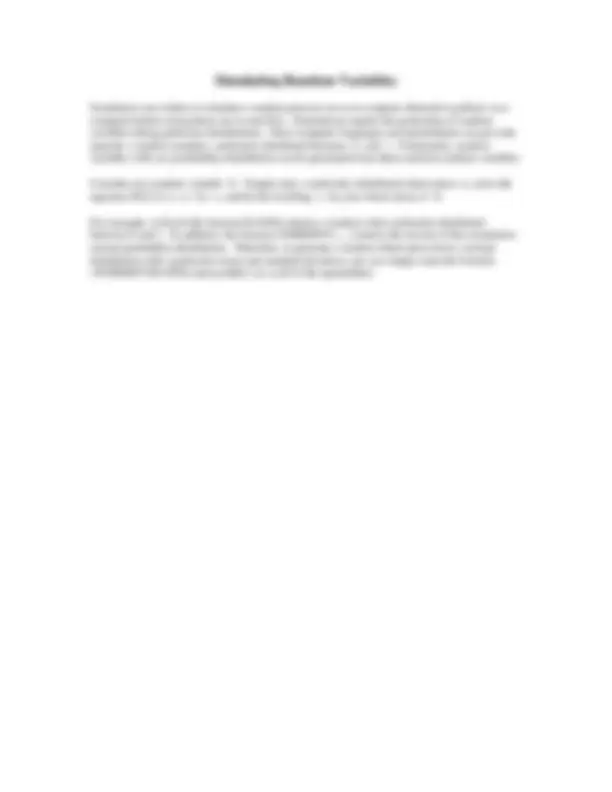
Continuous Random Variables
A continuous random variable is a random variable which can take any value in some interval. A
continuous random variable is characterized by its probability density function, a graph which has
a total area of 1 beneath it: The probability of the random variable taking values in any interval
is simply the area under the curve over that interval.
The normal distribution: This most-familiar of continuous probability distributions has the
classic “bell” shape (see the graph below). The peak occurs at the mean of the distribution, i.e., at
the expected value of the normally-distributed random variable with this distribution, and the
standard deviation (the square root of the variance) indicates the spread of the bell, with roughly
68% of the area within 1 standard deviation of the peak.
The Central Limit Theorem: The normal distribution arises so frequently in applications due to
an amazing fact: If you take a bunch of independent random variables (with comparable
variances) and add (or average) them, the result will be roughly normally distributed, no matter
what the distributions of the separate variables might be. Many interesting quantities, ranging
from IQ scores (across a demographically-homogeneous group of individuals), to changes in
share prices over time, to demand for a retail product (as it varies from day to day), to lengths of
toy tractor axles (being cut in an automated process), are actually a composite of many separate
random variables, and hence are roughly normally distributed.
If X is normal, and Y = aX+b, then Y is also normal, with E[Y] = aE[X] + b and
StdDev[Y] = |a|StdDev[X] . If X and Y are normal (independent or not), then X+Y and X-Y
= X+(-Y) are also normal (intuition: the sum of two bunches is a bunch). Any normally-
distributed random variable can be transformed into a “standard” normal random variable (with
mean 0 and standard deviation 1) by subtracting off its mean and dividing by its standard
deviation. Hence, a single tabulation of the cumulative distribution for a standard normal random
variable (attached) can be used to do probabilistic calculations for any normally-distributed
random variable.












